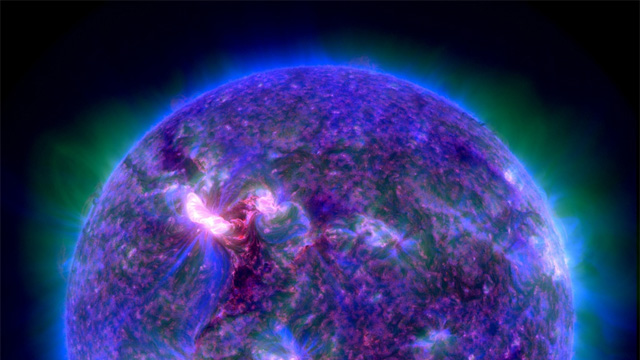
The first X-Class solar flare of the year went off on March 7th in spectacular fashion. Fortunately the flare went off where it's supposed to: on the Sun. Had this intense magneto-plasmic explosion gone off on Earth, we'd be toast; one of these releases an amount of energy on the order of 100 billion megatons of TNT.
Solar flares are highly energetic bursts of energy ignited by magnetically active regions on the Sun. Magnetic fields, generated by the motion of the Sun's hot, electrically charged gases, cause many of the Sun's more showy features, including the blemish familiar to most, the sunspot.
And yesterday, that's exactly what we saw from Chabot's observatory deck: a sunspot…and we didn't even need a telescope to see it! Let me explain. The active region that produced the powerful X-class flare only hours earlier left its mark on the Sun's bright complexion with a large cluster of sunspots—such an expansive cluster that it could be seen with the "naked eye."
Now, when I say naked eye, in this case I don't mean we were encouraging our visitors (mostly school kids at the time) to stare at the Sun directly. That would be pointless since the Sun is so bright at midday that it blinds us to any features we might see (and could blind us permanently if we look too long, even with sunglasses).
So, we have the kids look at the Sun through pieces of welder's goggle glass #14. It's a very dark filter—so dark that you pretty much can't see anything other than the Sun, or a welding torch, through it. This Sun-looking glass lets us peer safely into that wonderland in the sky, the solar disk, which ordinarily averts our attention by sheer brilliance.
